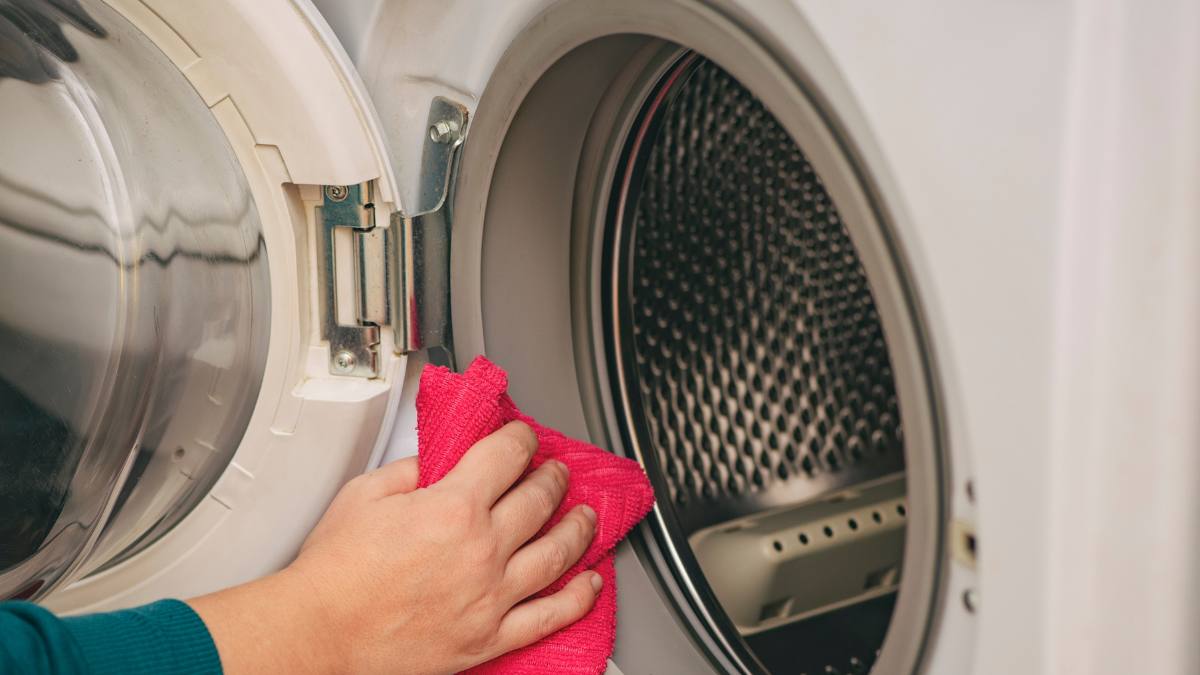While your washer could be self-cleaning thanks to the soap and hot water constantly being cycled through, this appliance still requires a deep clean now and then—since it can be a breeding ground for mold and bacteria. If you’re not maintaining freshness, then debris like soap scum, lint or other gunk can build up and ultimately transfer to your clothes. Fortunately, cleaning a washing machine is simple, doesn’t take much time or supplies and will help ensure long-lasting freshness. Need to start scrubbing? Keep reading to hear from experts for their best tips on how to clean a washing machine.
Why is it important to clean your washing machine?
Making sure your washer is clean is key to keeping your clothes or other laundry fresh. “The main problems with a dirty washing machine include the growth of bacteria and mold—which can make your machine and clothes smell—and debris clogging up the draining system,” says Michael Bogoyavlenskiy, CEO of Cleaning Express. “While it’ll take a long time for this to damage your machine, any standing water left in it will cause further smells.”
Signs your washing machine needs to be cleaned
If you use your washing machine frequently, doing a deep clean once a month isn’t a bad idea. But Michael Clarke, cleaning expert and founder and CEO of Pulled, a home management platform, says it definitely needs to be cleaned if you notice any of the following:
- A sour, musty or mildew smell. “This indicates that bacteria and mold may be present,” he says.
- Visible mold around the door seal, detergent dispenser or drum.
- Detergent residue or suds left after a wash.
- Stains or smells on your clothes after washing. “The washer could be clogged or malfunctioning, due to dirt buildup.”
How to clean a washing machine

When it comes to cleaning a washing machine you don’t need many supplies. Bogoyavlenskiy recommends using white vinegar, standard bleach or an oxygen-based cleaner like a varnish stain remover for best results. Here, his step-by-step instructions for how to clean a washing machine:
- Disconnect the washing machine from its power outlet.
- Remove the detergent drawer if possible and soak in hot soapy water.
- Your washing machine should have a debris trap near the bottom. Unscrew this and soak it in hot water.
- Wash both things thoroughly and dry them before returning them to the machine.
- Add either bleach or white vinegar to your detergent drawer. You’ll need about 150ml at maximum.
- Put your washing machine on the hottest and longest washing cycle possible.
- Once it’s finished, keep the lid open or open the door and use some vinegar on a cloth to wipe around the seal.
While these are general, the cleaning process may differ a bit depending on the type of washer you have (either top load or front load), explains Clark. “For front loading washers, you’ll want to clean the door seal using a damp cloth with bleach or vinegar and baking soda to remove any mold and debris that accumulate,” he says. “For top loading washers you can immediately set your machine to the largest load and hottest setting, add 1-2 cups of white vinegar or 1 packet of washing machine cleaner to the drum, and let the cycle run through the wash and rinse stages.”
More tips for washing machine maintenance
To ensure long-term freshness, it’s also important to maintain it regularly. Clark notes that if you live in an area with hard water, a general rule of thumb is to clean and sanitize your top-loading or front-loading washing machine every two to three months to prevent mineral deposits.
You’ll also want to leave the washer door open after a load. “This lets the air circulate and helps prevent moisture buildup, which can lead to mold,” says Clark. He also cautions against overloading as it can strain the machine and reduce its efficiency. Another easy tip to remember? Use high-efficiency (HE) detergent for HE washers since regular detergent can cause excess suds and residue buildup.






